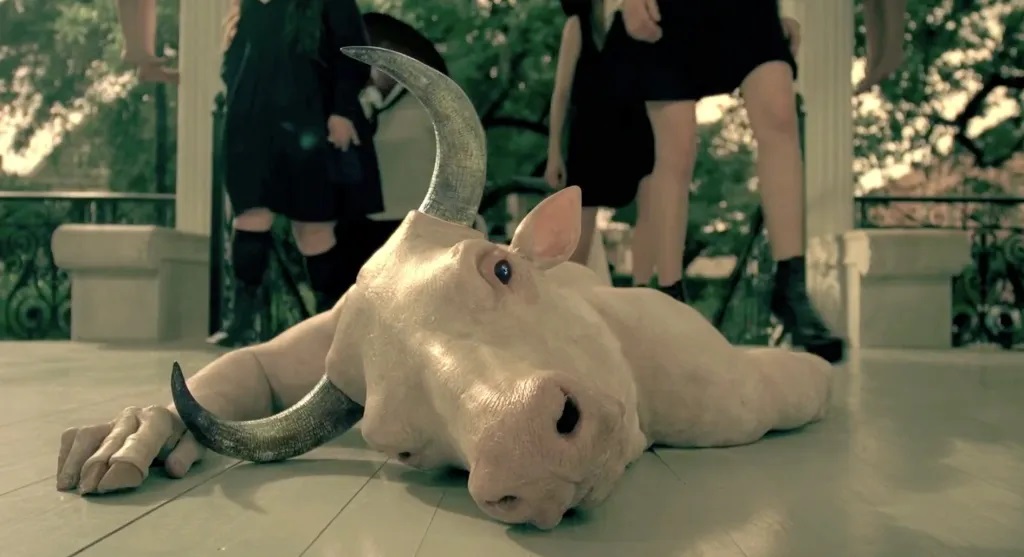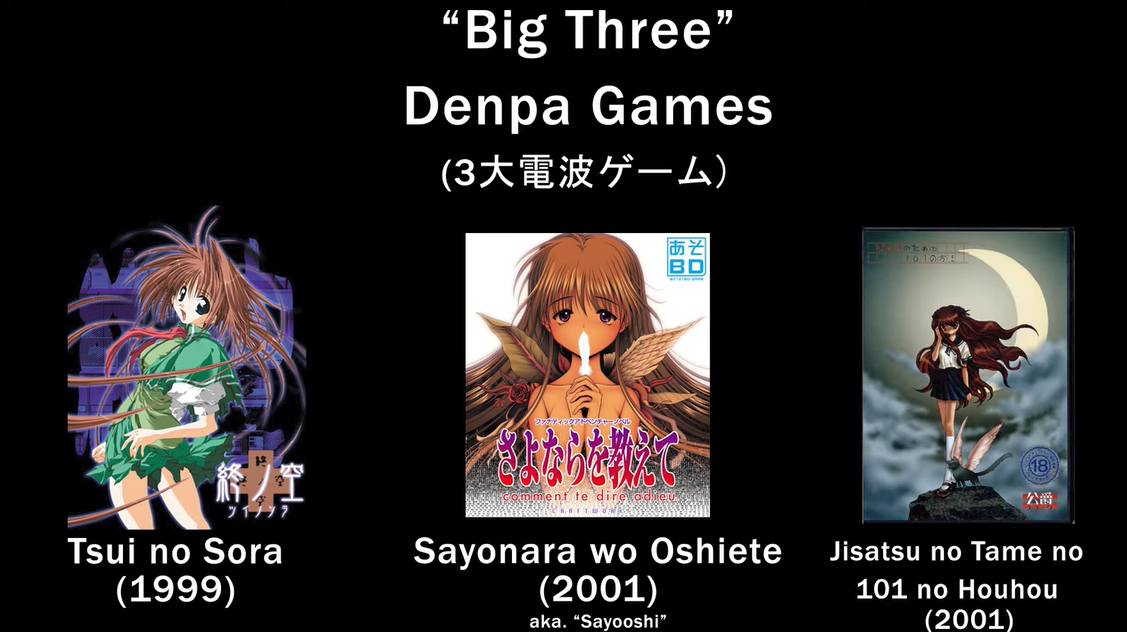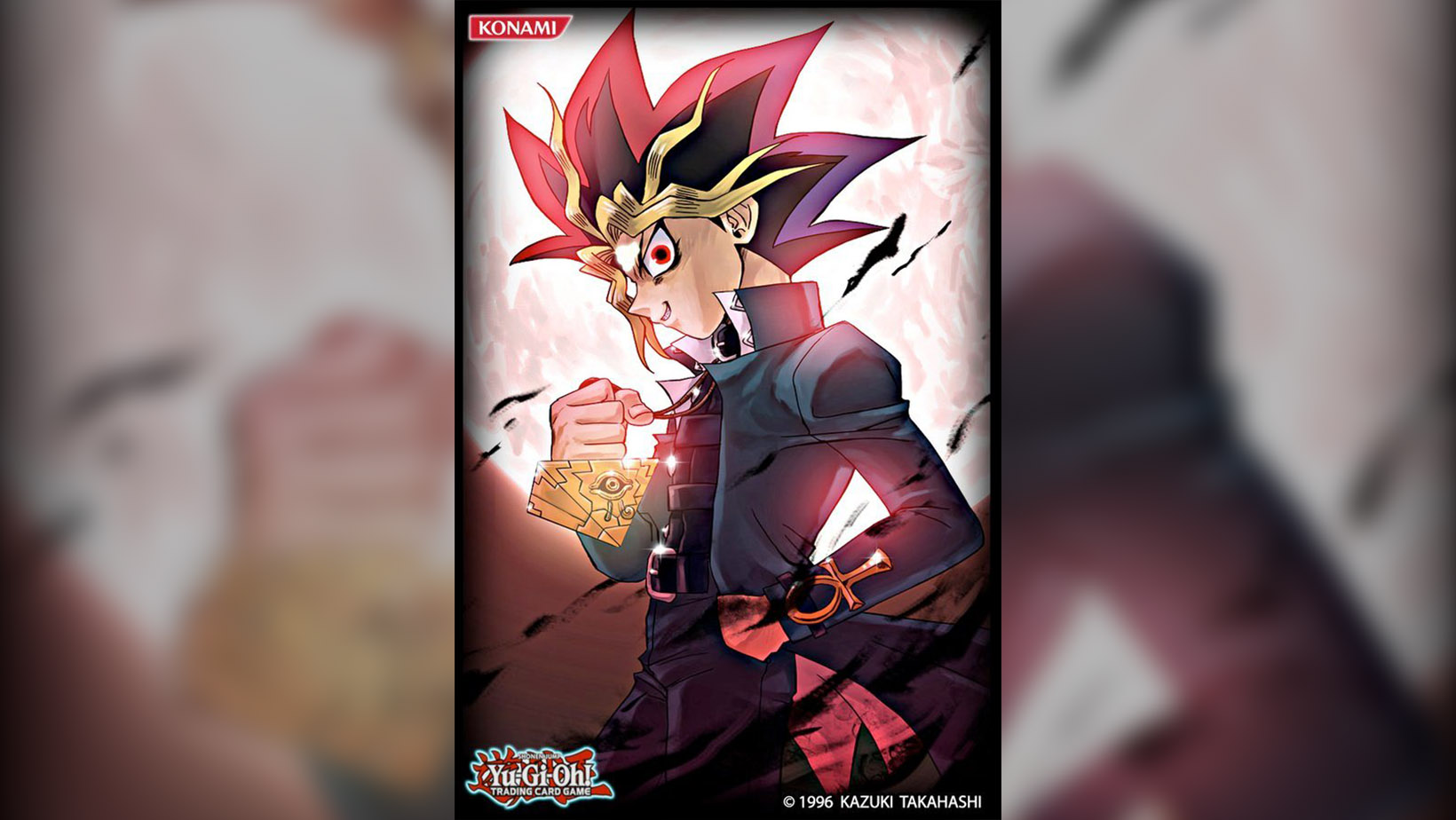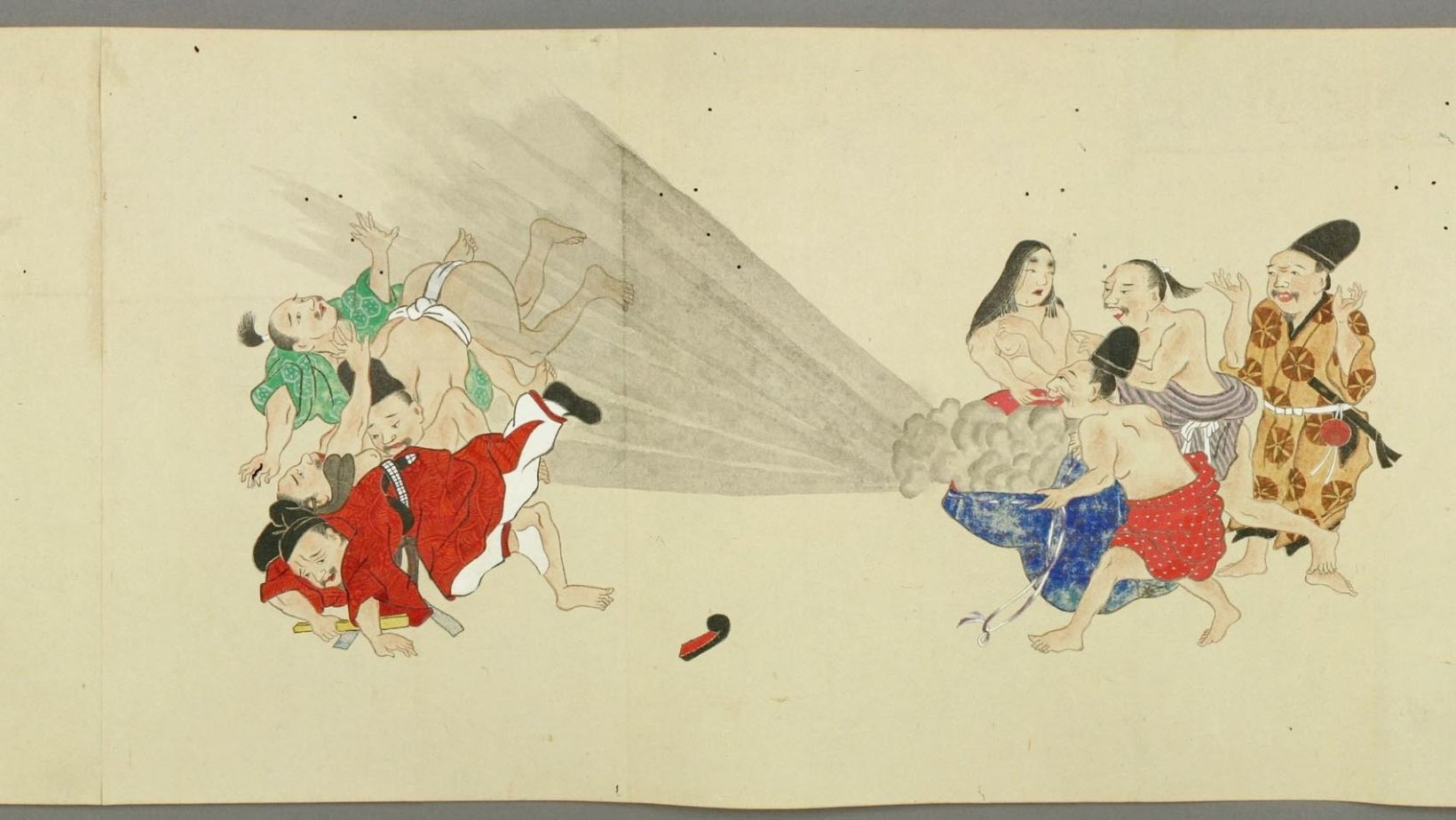
Cow Head, or Gozu in Japanese, is an urban legend that cryptically claims the existence of a tale able to shatter one’s sanity from reading mere fragments – the whole tale not intact as supposedly that dangerous. The entire idea is strongly reminiscent of Robert W. Chambers’ ‘The King in Yellow‘ – both concerning reading material of such wicked influence upon processing (or even involvement). Gozu was reportedly discovered in the 17th century by an unknown author, but other accounts claim the 20th-century sci-fi author, Sakyo Komatsu, concocted the tale as a secretive deed.
The ambiguous urban legend has spurred films to incorporate the motifs and developed from here into a more crystalized idea of a man with a cow head to represent it via the title (as one of the few concrete details to inspire). The first film to reference the urban legend was Takashi Miike’s Gozu (2003), but an upcoming film from Takashi Shimizu will also highlight the tale as the central focus – a conclusion to his ‘Village of Terror’ trilogy in which each film focuses an urban legend! Let’s pray these do not become valid interpretations of the Gozu tale and channel similar influences as the original.

Anybody reading the book’s content, or even excerpts, is said to foam at the mouth and fall unconscious – the severity depends on how much they endure. In other instances, the reader succumbs to terror for days, shambling and shivering incoherently until finally dying overnight. Authorities understandably attempted to suppress all records of the tale and purged any history relating to it – it was no different to a virus in terms of risking public health. The mystery of the author, content, and purpose persist – no details have ever materialised for any higher explanation.
Interestingly, a yokai exists – kudan – with the body of a bovine and the head of a human – a reversal of how the physical manifestation of this tale has been cultivated. More closely related, however, a ‘kudan’ was rumoured during the World War 2 era which had a bovine face and wore a kimono – much closer to the current idea and referred to as ‘ushi-onna’ (cow woman). The symbolism of kudan is that of a messenger and the ‘ushi-onna’ of World War 2 carried a prophecy of foreboding doom: Imperial Japan would lose World War 2 for national destruction. Maybe the tale itself, and the figurehead of it, are a gloomy prophecy of terrible events, provoking fatalistic terror of future events?

A fun anecdote claims a schoolteacher took his class on a school trip and to entertain his kids during their trip, he usually recited ‘kaidan’ as his playful notion to spook the children. On a bus for the trip, he suggested sharing ‘Cow Head’ to the kids’ dismay – they begged him to not, all aware of the consequences of its reputation. He persisted merrily, however, and did not conceive the full effects. The teacher subsequently collapsed unconscious and awoke later to the bus in a ditch, all his students unconscious.
More Japanese Deep Dives
Denpa Visual Novels – The Big Three Denpa Games
Hi fellow weirdos! This is Javi again, researching for you to bring you another interesting bit of Japanese media. We have previously discussed the term “Denpa,” which, according to Jisho.org,…
Hanatarash: Japan’s Most Dangerous Band
Hanatarash, or Hanatarashi, are a two-piece noise band from Osaka, Japan. Composed of vocalist, visual artist Yamantaka Eye and guitarist Mitsuru Tabata, the band focused on the obscure music genres…
Yu-Gi-Oh Hangman Card Urban Legend – The Cursed Game Card
In the early 2000s, anime experienced a surge in popularity among Western audiences, marking a peculiar time for anime fans. However, as this unique form of animation gained mainstream attention,…
Samurai Fart Battles – The Lighter Side of History
When we picture samurai warriors, images of honor, discipline, and fierce sword battles come to mind. However, there is a hidden and often overlooked aspect of samurai culture that was…
Some say the countdown begun when the first man spoke, others say it started at the Atomic Age. It’s the Doomsday Clock and we are each a variable to it.
Welcome to Carcosa where Godot lies! Surreality and satire are I.
I put the a(tom)ic into the major bomb. Tom’s the name!




